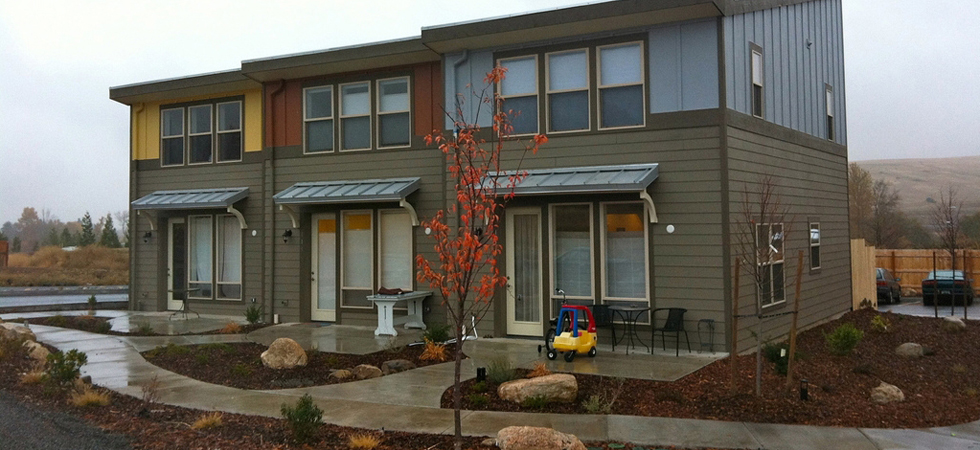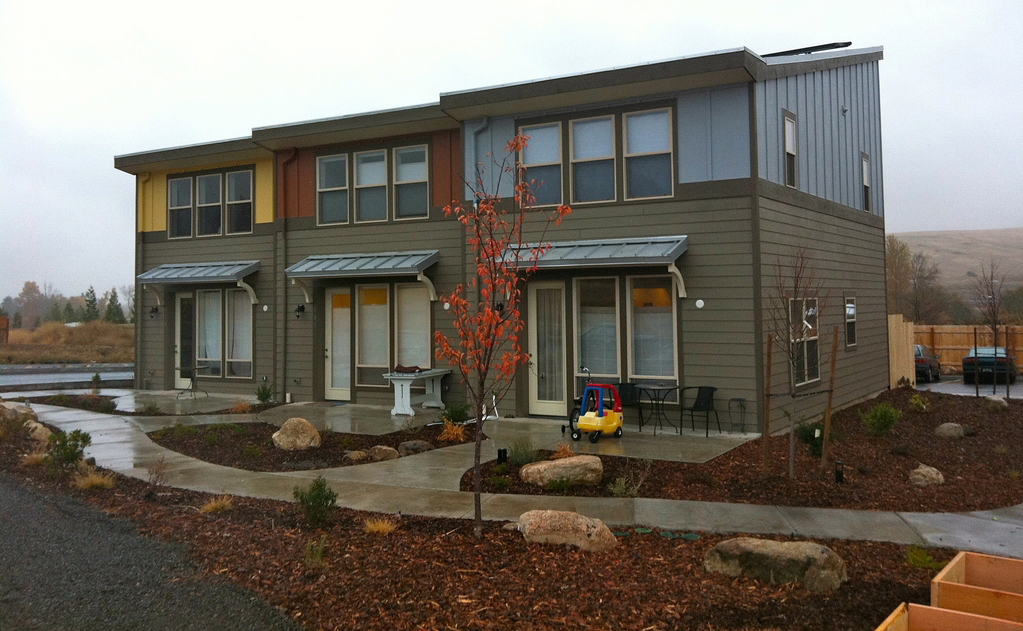Today, fifteen families have a safe, new and affordable place to call home in Ashland, Oregon. This southern Oregon town is now home to a new green, affordable community that was made possible through the USDA Rural Development’s Mutual Self-Help Housing Program.
Roxana Zepeda, Groundworks CDC’s Dream$avers Specialist, estimates that as many as twelve of the families that moved in were able to because of their Individual Development Accounts through the Oregon IDA Initiative.Tomas Monter and his wife, Jessie, along with their two children were one of those families.
Tomas heard about the Dream$avers IDA program through NeighborWorks Umpua, an Initiative Partner, from a visiting speaker at HeadStart, where he works as an interpreter. The IDA Initiative provided him and his wife the first opportunity to save enough money for a new house. Tomas said that before his family moved into their own house with their 1 year old and 3 year old, they were “just renting here and there, saving as much as we could” but not getting anywhere near enough for a down-payment. When they found out about the Oregon IDA Initiative, they jumped at the chance recognizing this was their opportunity to really get the most out of the Mutual Self-Help Housing Program. Because of the IDA Initiative, paired with the USDA Rural Development’s Mutual Self-Help Housing Program, Tomas Monter says that he was able to not only “buy a house in Oregon for my family,” but also “support the local economy, as well.”
Rice Park, the community that Tomas and so many other IDA participants now own their own homes in, is a unique affordable housing community. Roxana explains that “Mutual Self-Help” means that the “future homeowners are the ones that work together building the neighborhood and when they finish the houses, each of them already have a home… “
They work together for a year and by the time they finish their homes, they know their new neighbors extremely well. While they were building their homes together, Tomas and several of his neighbors were saving for a down-payment through the Initiative. Roxana said that although the down-payment was not required for their 0% loans, the IDA Initiative presented an opportunity for them to “earn a lot of equity pretty fast for the houses, in turn, solidifying their financial positions from the beginning.”
In addition to the USDA’s and the IDA Initiative’s support for this community, it is built on a land trust. So, NeighborWorks Umpqua, a partner organization of the IDA Initiative and host of the Dream$avers program, owns the land and the homeowners pay a small lease to the non-profit each month. The land trust model helps keep homes more affordable for neighbors on fixed incomes because the land trust removes the cost of purchasing land from the home purchase. In return, home owners agree to resell the home to a future land trust participant, thereby keeping the home affordable for future generations. The new homes are also completely green – helping families save money on utility costs. Tomas has said that they also really enjoy not “feeling like you’re putting that monthly expense into nothing, now we are able to put it into a house… Our home has also been certified as an Earth Advantage Platinum, which means the house has features to save money like during the winter it keeps warmer and during the summer it keeps cooler.” Having a new home with energy efficient features is something they never had while renting apartments, and makes it easier for the family to make ends meet in their new home, while still saving for emergencies.
Roxana pointed out that Ashland has been very welcoming to the Rice Park community, saying that it “is a very pioneer city, where very green and environmentally conscious people live… and for us to be able to make a statement and say, you can have low income people living in a decent house, has been huge. [Our participants] sometimes worry that the community will see them differently, but in this case the people of Ashland really admire the homeowners because they … were involved in the building of these homes.”
All of the residents had to work every weekend in the community, and Tomas said this has made them “get to know our neighbors really well… We interact with our neighbors on a regular basis. We feel that in a lot of ways we have a lot in common with our neighbors, advocating for similar things and hosting parties or working in our garden. We feel that this project has gotten us more engaged with each other.” He adds that the project has “gotten the community to work together – both for reasons of convenience and friendship.”
The Initiative taught Tomas and his wife valuable financial management skills that he continues to employ today. Tomas talks about how the financial education classes “were not only helpful in [learning] how to save, but I became more aware of how the financial system is and made me aware of how we think we know the system, but we are sometimes naïve …and make decisions that are not really in our best interests. [The classes] really helped me to improve my [financial] habits and improve my savings and money.” Tomas was very enthusiastic about the perspective the classes gave him on his situation, saying that they empowered him to “really realize how good of a deal [he] was getting on this house – with the financing and interest.” He has noticed how “differently [he] manages things” and how the classes really helped him to save constantly and view it as a necessary expense each month.
Tomas and his family love living in an “affordable housing project in a town that is usually expensive to live… We live close to a good school and the whole town is very community oriented. You run into people that you know on a regular basis. The community has a cultural outlook, so there is a lot of free entertainment during the summers. …It has really helped low-income people be a part of a community that is more [usually associated] with the benefits of high-price living.” Tomas and his wife are very happy and can’t stop talking about how much of an improvement this has all been for their lives.
Roxana remembers that when construction began, the families wanted “fence(s) and their privacy… At the end of the year, after working and saving closely together, none of them wanted the fence, because they know each other so well — they were close friends and family.”





